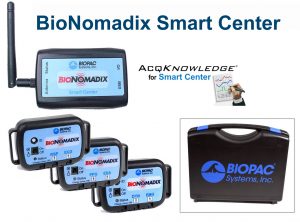The Future of Physiology Research
Date
Thursday, October 26, 2017
Location
Online: Watch On-demand
Life science researchers depend on rapidly evolving technology for scientific discovery. Understanding the next generation of tools is critical. Join industry leader BIOPAC Systems, Inc. for a peek into the future of physiology research.  Smart Center—BIOPAC’s groundbreaking new data acquisition and analysis system for researchers, includes powerful recording technology paired with simple setup, making recording quality data easier than ever! Frazer Findlay, BIOPAC CEO, discusses the latest technological advances that will impact researchers and their experiments. Join us to learn:
Watch the webinar to get ready for the future of physiology recording and analysis. See also: Future of Physiology Webinar FAQ Related Webinars: | Complete Form to Watch Webinar! |
For more information about BIOPAC events, check the BIOPAC Events Calendar or email support@biopac.com.
Stay Connected